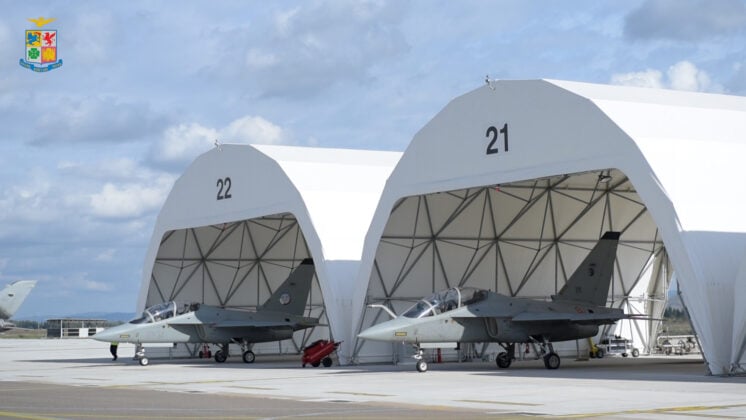
For the first time in history, the United States Air Force has selected a NATO partner nation to provide pilot training.
On August 22, the Italian Air Force and the U.S. Air Force signed an agreement that will bring American pilot trainees to the International Flight Training School (IFTS) in Decimomannu, Sardinia.
The “Concept of Operations (CONOPS) for Flight Training of the USAF Military Personnel in Italy” was signed separately by Italian Air Force Chief of Staff, General Antonio Conserva, and Lieutenant General Brian S. Robinson, commander of the Air Education and Training Command of the U.S. Air Force. The agreement marks a milestone in transatlantic cooperation, as it represents the first time American aviators will undergo training in a NATO country outside the United States.
According to the Italian Ministry of Defense, the decision to place U.S. personnel at the IFTS reflects the school’s unique capabilities and reputation for excellence. The T-346A aircraft, used as the advanced training platform at the school, was a key factor in the U.S. decision. The jet is comparable in role and performance to the new T-7 Red Hawk, which is set to become the U.S. Air Force’s next-generation trainer.
Ten American trainees are scheduled to begin their courses at Decimomannu. They will undergo an advanced program built around the “Multiphase Jet Training Integrated Syllabus,” a curriculum jointly developed by the Italian Air Force and the U.S. Air Force. This program is designed to qualify pilots for their military wings on the T-346A in approximately nine months.
The International Flight Training School, founded through a partnership between the Italian Air Force and Leonardo, offers advanced military flight training to both Italian and international pilots. Managed by the 212th Squadron of the 61st Wing, the school operates from Decimomannu Air Base, where state-of-the-art facilities and advanced simulators support its training missions.
In a statement, the Italian Air Force highlighted the importance of the agreement as part of the country’s broader effort to expand its training capabilities and role within NATO. The Ministry of Defense described the cooperation as a demonstration of trust between allied air forces and recognition of Italy’s ability to host high-level training programs.
For the United States, the arrangement offers access to an established NATO training hub at a time when pilot throughput and allied interoperability are both pressing priorities. By training alongside Italian counterparts, U.S. Air Force personnel will gain experience in multinational environments and familiarize themselves with NATO operational standards.
The arrival of U.S. trainees represents a new chapter for the IFTS, which has already drawn interest from multiple allied nations seeking advanced fighter pilot instruction. With this agreement, the school strengthens its role as a central training facility within NATO, capable of shaping the next generation of allied fighter pilots.
The first class of American trainees is expected to arrive at Decimomannu later this year. Once complete, they will join the ranks of pilots certified through an allied-run program that reflects deepening cooperation between the U.S. Air Force and its European partners.